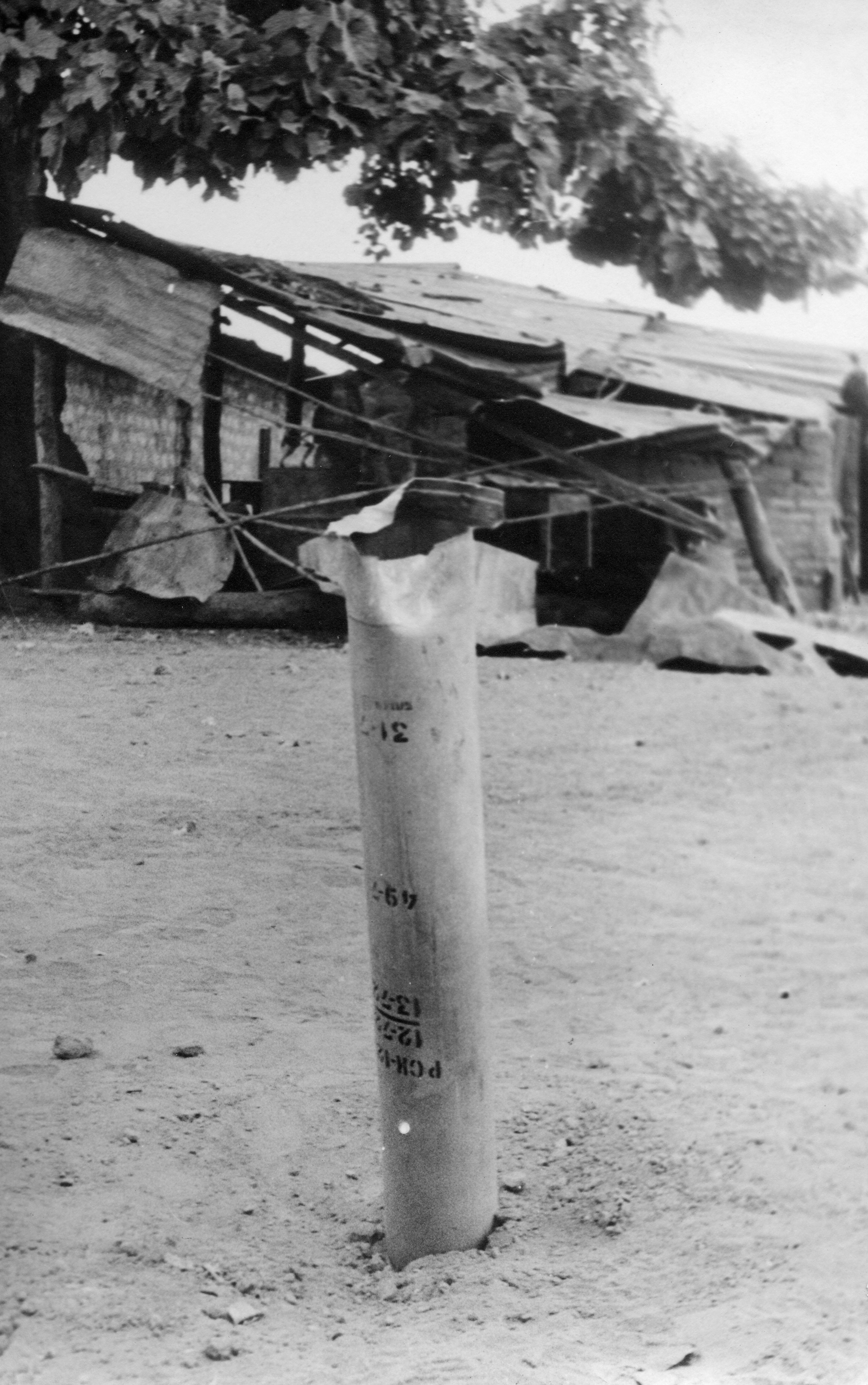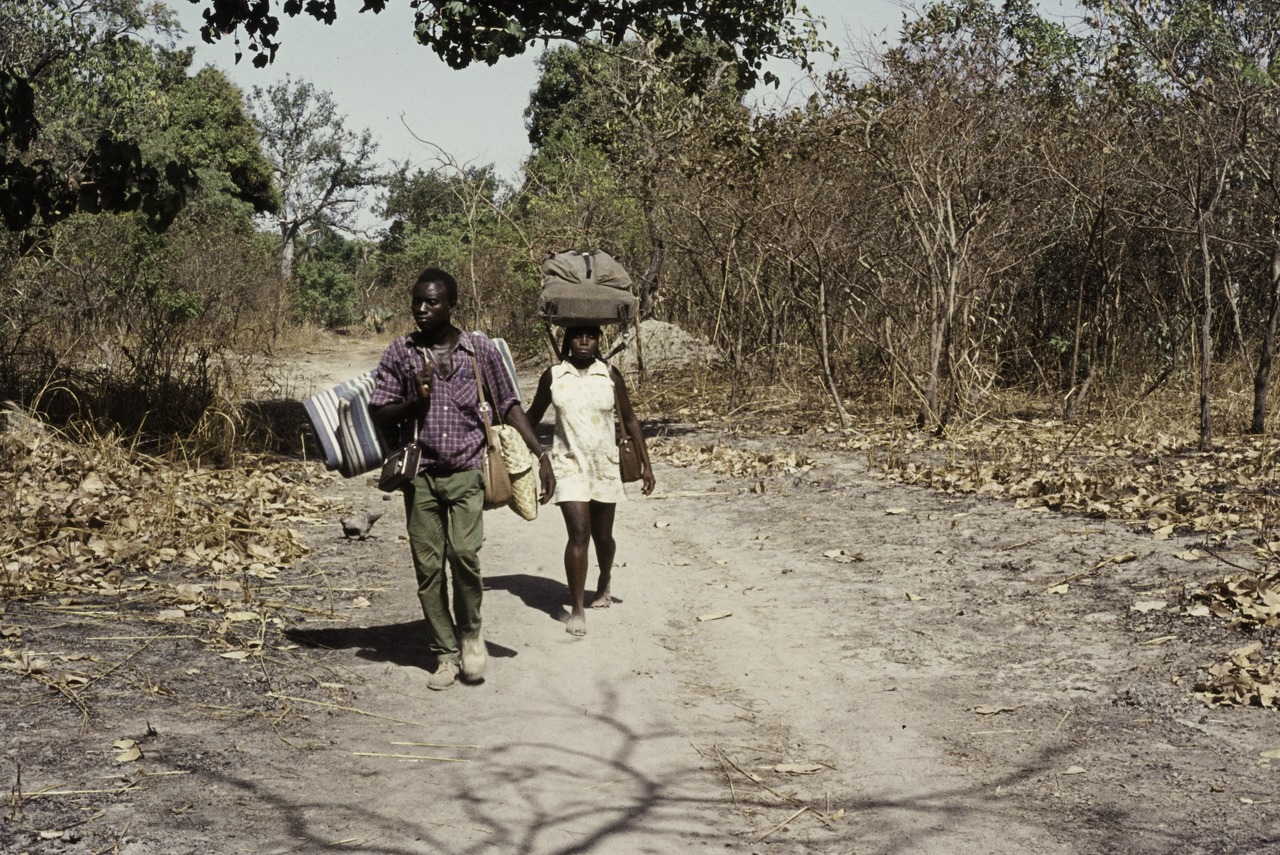Refugees and the War for Independence in Guinea-Bissau
Following the massacre of more than 50 striking dockworkers at the Pidjiguiti docks in Bissau, the capital of colonial Portuguese Guinea, the Partido Africano para a Independência da Guiné e Cabo Verde (PAIGC) established a base in Conakry, the capital of independent Guinea, with the aim of fighting for national liberation. The PAIGC relied on ties across both of Portuguese Guinea’s borders (Senegal and Guinea) to carry out military operations against the Portuguese.
Equally important to the cross-border movement of independence fighters was the substantial number of refugees who fled out of Portuguese Guinea facing violence and economic devastation. Census figures between 1960 and 1970 indicate a decline of 12.4 percent of the colony’s population, but other estimates suggest over 20 percent of the population left by the end of the war. Many of these settled in border communities in southern Senegal and Guinea, although some moved farther into Gambia.
Portuguese Guineans fleeing to Senegal did so for a variety of reasons. Some cited the requisitioning of cattle and harassment by the PAIGC forces fighting for independence, while others fled precipitously during attacks by one side or the other. One woman I interviewed in 2017 described the situation as producing never-ending fear, with women hiding in forests to avoid open areas that were more likely to be bombed. And the PAIGC’s demands for food and cattle for their war effort placed already-stretched farmers in an even more precarious position.
Arguably, however, life became even more difficult as time went by in areas that were still under Portuguese control. The PAIGC struck at Portuguese trading operations in the eastern part of the colony, making the growing and selling of peanuts difficult, and disrupting Portuguese distribution routes, while continuing to control the primary rice-growing areas and allowing little access to them.
By the close of the war, more than 100,000 Bissau-Guineans lived outside of their newly-independent state, and it was unclear how many would return to the country. Numerous refugees who had fled to Senegal and Guinea returned after hostilities ceased, but their migrations in this period were not the only noteworthy ones. Many had fled dangerously exposed villages for towns, and returned quickly to their former homes. However, those homes often needed to be rebuilt.
Many in the liberated areas controlled by the PAIGC had established new villages in the forest to escape Portuguese bombing, but after the war returned to re-establish villages in or near their former locations in open country. All this planning and construction activity generally occurred at the expense of agriculture and meant that roughly 90 percent of the food in Guinea-Bissau in the year after independence had to be imported.
Most estimates of the Bissau-Guinean population in Senegal indicate that about half of the refugee population returned in the years after the war. Similar percentages of Fulbe refugees returned to their former villages from southern Senegal to rebuild their lives. But by the same token, roughly half stayed in Senegal, where they had joined family during the war and/or established new connections.
After the close of the war, there was a great deal of tension between former PAIGC and former Portuguese soldiers. PAIGC soldiers killed former Portuguese soldiers, political opponents, and coup plotters throughout the late 1970s. Oral histories I conducted in 2017 support the idea that the PAIGC government targeted ex-Portuguese troops, even sending its own soldiers into Senegal to search for them there. Several from Guinea-Bissau reported of the PAIGC searching for “traitors” in Senegal, and Bissau-Guinean news reports in the weeks following Nino Vieira’s 1980 coup alleged massacres of former Portuguese soldiers—the ending of which was one of the coup’s stated objectives.
Even as about 50,000 returned home, some soldiers fled to Senegal to avoid persecution. One former Portuguese soldier crossed the border to the village of Medina Ndoondi, where he already had family. Typically, the PAIGC searched for ex-soldiers who had played more prominent roles during the war. Two soldiers I spoke with both stated that while the PAIGC targeted ex-Portuguese soldiers, no one in a position to do anything about it knew about their participation in the war. Many of these former Portuguese soldiers returned to Guinea-Bissau in the years following independence, when they believed the political climate was less fraught.
For both those who fled during the war and those who fled after, their ties in Guinea-Bissau remained strong. This allowed them to profit economically from cross-border networks and create opportunities for themselves and their extended family on both sides of the border. Very few people severed their ties with Guinea-Bissau entirely, and some still consider themselves Bissau-Guinean despite living in Senegal for half a century.

